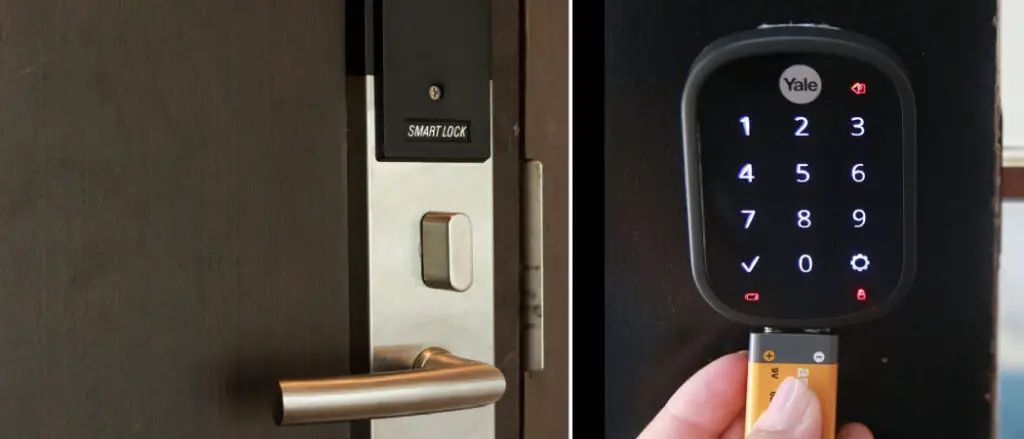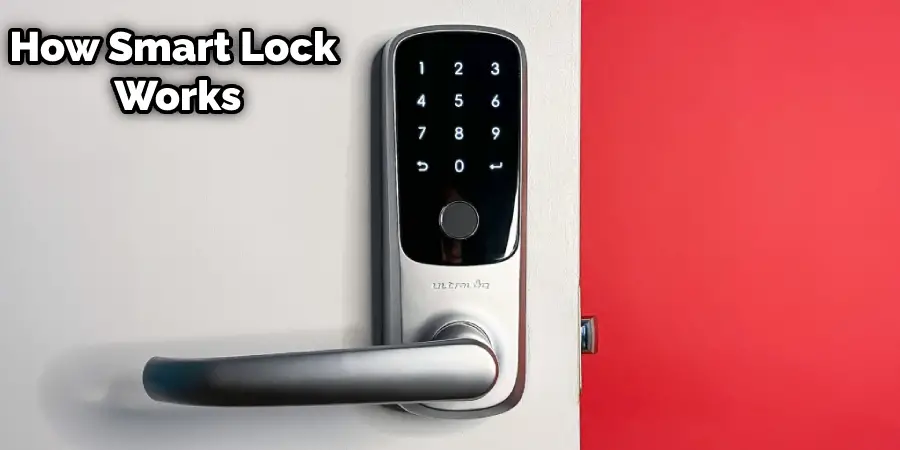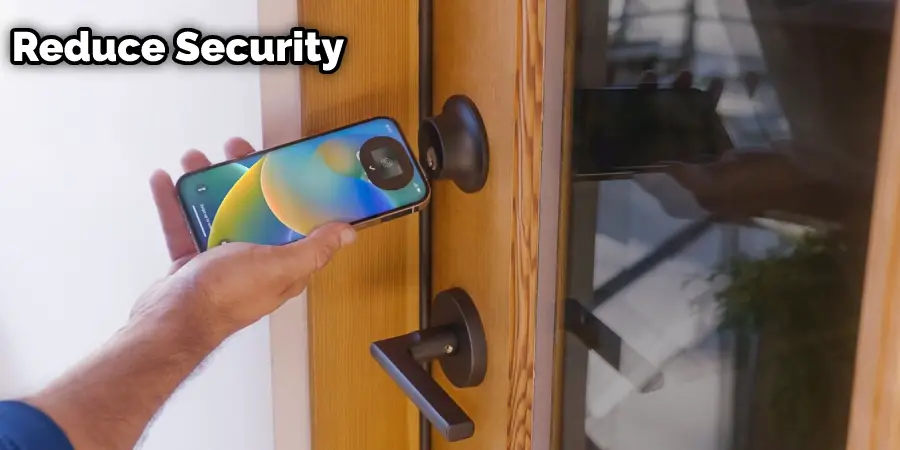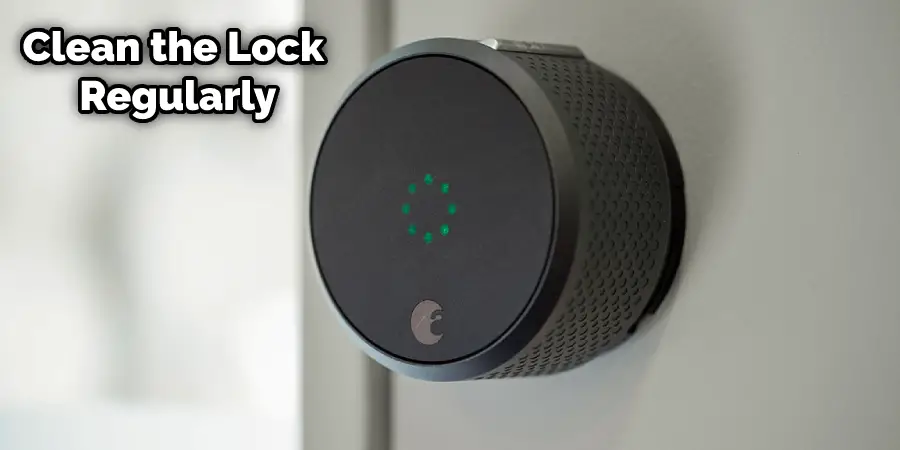Smart locks are becoming a popular choice for homeowners looking to add an extra layer of security and convenience to their homes. Smart locks provide various features, such as remote access, automated unlocking, scheduled access, keyless entry, and more. However, one simple thing can lead to problems with your smart lock: battery failure.

In this blog post, we’ll explore what happens if the battery in a smart lock dies, how you can prevent it from happening, and some helpful tips for maintaining your smart lock for long-term use. So keep on reading to learn more about what happens if Smart lock battery dies.
What a Smart Lock Is and How It Works
A smart lock is a type of electronic lock that uses wireless communication to enable remote access and control. Smart locks can be operated through a variety of methods, including a mobile app, a keypad, a key fob, or even voice commands through a smart home device like Amazon Echo or Google Home.
Smart locks typically use Bluetooth or Wi-Fi technology to communicate with a user’s smartphone or other device. When a user approaches the door, the lock senses the device and can automatically unlock the door without the need for a physical key. Some smart locks also have a physical keyhole as a backup option in case of battery failure or other technical issues.
Smart locks can also offer additional features such as:
- The ability to grant access to others remotely, such as friends or family members
- Notifications when the door is unlocked or locked
- Integration with other smart home devices, such as security cameras or alarms
- The ability to monitor who has entered and exited the property

Overall, smart locks offer convenience, security, and flexibility to homeowners and renters looking for a modern way to secure their homes.
What Happens when A Smart Lock Battery Dies
When a smart lock battery dies, the lock may stop working and become unresponsive. Depending on the specific lock model and its features, here are some potential consequences of a dead smart lock battery:
1. Unable to Unlock the Door:
If the smart lock relies on battery power to function, a dead battery can prevent the lock from unlocking with its usual methods, such as using the mobile app or a keypad. This can cause frustration and inconvenience if you don’t have a physical key as a backup.
2. Inability to Control the Lock Remotely:
If the smart lock has a mobile app or other remote control features, a dead battery can prevent you from controlling the lock through these methods.
3. Reduced Security:
If the smart lock is a primary security feature for your home, a dead battery can leave your home vulnerable to intruders. It’s important to keep your smart lock battery charged and to have a backup key available in case of battery failure.

4. False Alarms:
Some smart locks have low-battery warning systems that can trigger false alarms or notifications, which can be confusing and distracting.
5. Loss of Other Features:
Finally, if the dead battery affects other features of your smart lock, such as automated unlocking, access control, or integration with other devices, you may lose these features until the battery is replaced.
6. Difficulty Replacing Batteries:
Finally, depending on the model and design of your smart lock, it may be difficult or even impossible to replace dead batteries. If this is the case, you will likely need to call a professional locksmith to help you.
7. Inoperable Lock:
In the worst-case scenario, a dead battery can cause your smart lock to become completely inoperable until you get a new battery. If this happens, it’s important to contact an experienced locksmith as soon as possible.
8. Expensive Replacement:
Replacing the battery in a smart lock can be expensive and time-consuming. It’s best to have a backup plan and make sure that your smart lock has an up-to-date battery for long-term use.
8 Ways how To Prevent Smart Lock Battery Failure
1. Keep Track of the Battery Level:
Check the battery level of your smart lock regularly and replace it when necessary. This will help ensure that your lock is always ready to use and helps prevent unexpected failure due to a dead battery.
2. Use Quality Batteries:
Invest in quality batteries for your smart lock, as cheaper options may not have the same longevity or performance. Using high-quality batteries can help extend the life of your lock and prevent battery failure.
3. Avoid Extreme Weather:
Excessive heat or cold weather can reduce the lifespan of a smart lock battery, so it’s important to avoid storing them in extreme temperatures.
4. Clean the Lock Regularly:
Removing dirt, dust, and other debris from your smart lock will help keep its components functioning properly, which can help reduce battery failure.

5. Periodically Check for Updates:
Checking for software updates regularly can help ensure that your smart lock is running on the latest version and can help prevent any potential battery issues.
6. Unplug When Not in Use:
Unplugging your smart lock when it’s not in use can help reduce the risk of accidental battery drain. This will help keep it functioning optimally for longer periods of time.
7. Use Power Saving Mode:
Many smart locks have power-saving mode options, which can help conserve battery life over long-term use. Utilizing this feature when possible can help prevent unexpected lock failure due to a dead battery.
8. Use Automated Scheduling:
If your smart lock has automated scheduling, try setting it to lock and unlock at specific times. This can help reduce the amount of manual interaction and can also help conserve battery life.
By following these tips, you can help prevent unexpected smart lock battery failure and keep your home secure.
Troubleshooting tips for dealing with a dead smart lock battery
Here are some troubleshooting tips for dealing with a dead smart lock battery:
1. Use a Physical Key:
Most smart locks come with a physical key as a backup option in case of battery failure or other technical issues. If the battery is dead, you can use the physical key to unlock the door manually. Make sure to keep the physical key in a safe and accessible place.
2. Manually Change the Battery:
If the smart lock is designed to use replaceable batteries, you can try manually changing the battery. First, locate the battery compartment on the lock and remove the old battery. Then, replace it with a fresh battery and test the lock to see if it works.
3. Use a Backup Power Source:
Some smart locks have a backup power sources option, such as a USB port or a 9V battery connector, which can be used to power the lock temporarily in case of battery failure. Check the lock manually to see if it has a backup power option, and follow the instructions to connect the backup power source.
4. Contact Customer Support:
If the above troubleshooting steps do not work, or if you’re unsure how to proceed, contact customer support for your specific smart lock model. They can provide you with further guidance and assistance in resolving the issue.
Remember, it’s important to keep your smart lock battery charged and to have a backup plan in case of battery failure, such as keeping a physical key handy or knowing how to manually change the battery. By being prepared and knowing how to troubleshoot, you can avoid the inconvenience and potential security risks of a dead smart lock battery.
How Long Does the Battery in A Smart Lock Last?
The lifespan of a smart lock battery can vary depending on several factors, including the specific lock model, usage patterns, and battery type. Generally, most smart lock batteries last between 6 months to 1 year on average.
Some factors that can affect the battery life of a smart lock include:
- Lock usage: The more frequently the lock is used, the faster the battery will drain.
- Wireless communication: The use of wireless communication (e.g., Bluetooth, Wi-Fi) can drain the battery faster than a lock without these features.
- Temperature: Extreme temperatures (hot or cold) can affect the battery life of a smart lock.
- Battery quality: The quality of the battery used in the lock can affect its lifespan.
- Low-battery warning system: If the lock has a low-battery warning system, this can help prolong the battery life by alerting the user to replace the battery before it dies completely.
It’s important to monitor the battery life of your smart lock and replace the battery regularly to ensure the lock functions properly. Some smart locks come with an app or other features that can help monitor the battery life, so make sure to take advantage of these tools.
Overall, the lifespan of a smart lock battery can vary, but on average, you can expect it to last between 6 months to 1 year.
Frequently Asked Questions
Q: How Often Should I Change My Smart Lock Battery?
A: It’s recommended to replace the battery in your smart lock every 6-12 months. Check the owner’s manual for specific instructions on to do this. Additionally, some smart locks come with an app or other features that can help monitor the battery life and remind you when it’s time to replace the battery.
Q: How Do I Know if My Smart Lock Is Low on Battery?
A: Most smart locks come with a low-battery warning system that will alert the user if the battery needs to be replaced soon. Additionally, some locks come with an app or other features that can help monitor the battery life. If you’re unsure if your lock has a low-battery warning system, check the owner’s manual or contact customer support for further assistance.
Q: What Type of Batteries Do I Need for My Smart Lock?
A: The type of battery needed will depend on the specific model of your smart lock. Check the owner’s manual for the correct type of batteries to use, or contact customer support for further guidance. It’s important to use the correct type and size of the battery to ensure that the lock functions properly.
Conclusion
To summarize, a smart lock is a convenient and secure way to lock and unlock your doors, but it requires battery power to function properly. A dead smart lock battery can have severe consequences, such as the inability to unlock the door, reduced security, and false alarms. It’s essential to monitor the battery life of your smart lock, replace the batteries regularly, and have a backup plan in case of battery failure.
Troubleshooting tips for dealing with a dead smart lock battery include using a physical key, manually changing the battery, using a backup power source, or contacting customer support for assistance. By taking proactive steps to maintain smart lock batteries and knowing how to troubleshoot in case of battery failure, you can ensure your smart lock’s proper functioning and security. Thanks for reading this article about what happens if smart lock battery dies.
